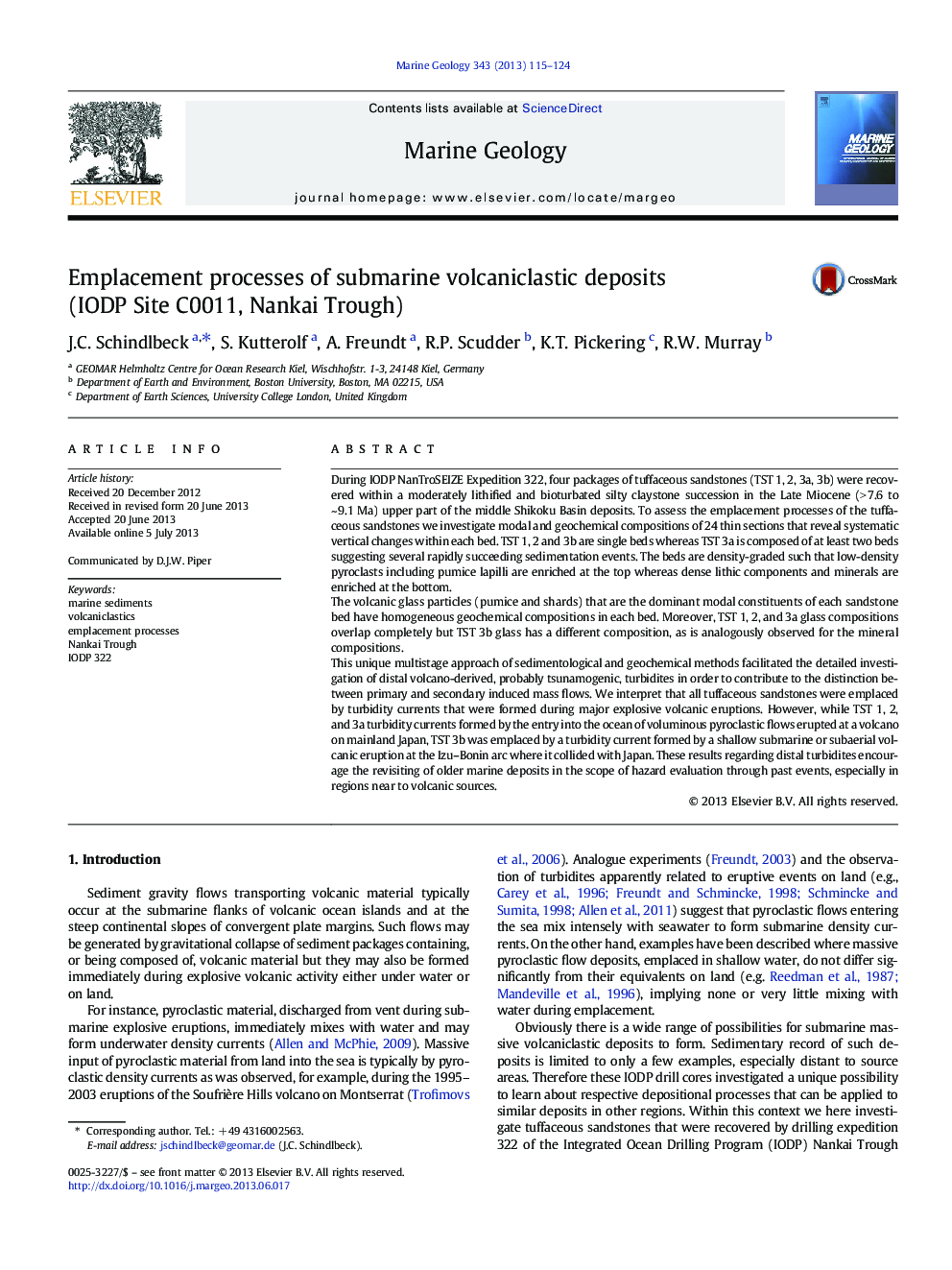| Article ID | Journal | Published Year | Pages | File Type |
|---|---|---|---|---|
| 6441721 | Marine Geology | 2013 | 10 Pages |
Abstract
This unique multistage approach of sedimentological and geochemical methods facilitated the detailed investigation of distal volcano-derived, probably tsunamogenic, turbidites in order to contribute to the distinction between primary and secondary induced mass flows. We interpret that all tuffaceous sandstones were emplaced by turbidity currents that were formed during major explosive volcanic eruptions. However, while TST 1, 2, and 3a turbidity currents formed by the entry into the ocean of voluminous pyroclastic flows erupted at a volcano on mainland Japan, TST 3b was emplaced by a turbidity current formed by a shallow submarine or subaerial volcanic eruption at the Izu-Bonin arc where it collided with Japan. These results regarding distal turbidites encourage the revisiting of older marine deposits in the scope of hazard evaluation through past events, especially in regions near to volcanic sources.
Related Topics
Physical Sciences and Engineering
Earth and Planetary Sciences
Geochemistry and Petrology
Authors
J.C. Schindlbeck, S. Kutterolf, A. Freundt, R.P. Scudder, K.T. Pickering, R.W. Murray,
